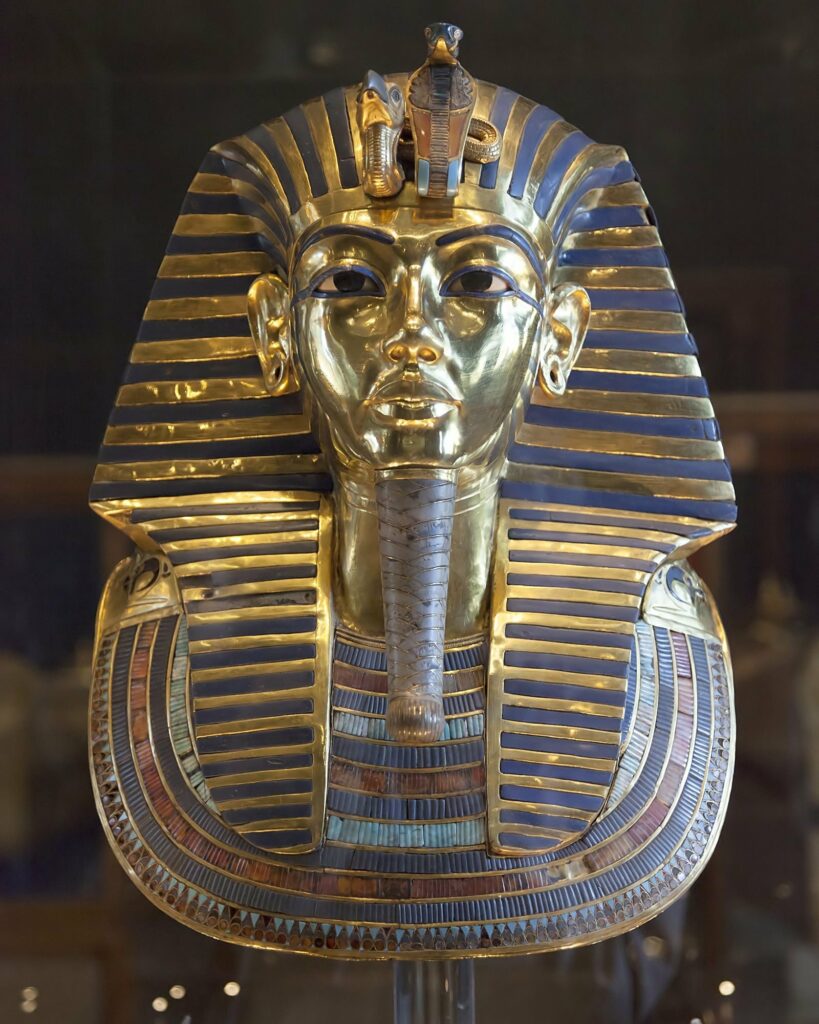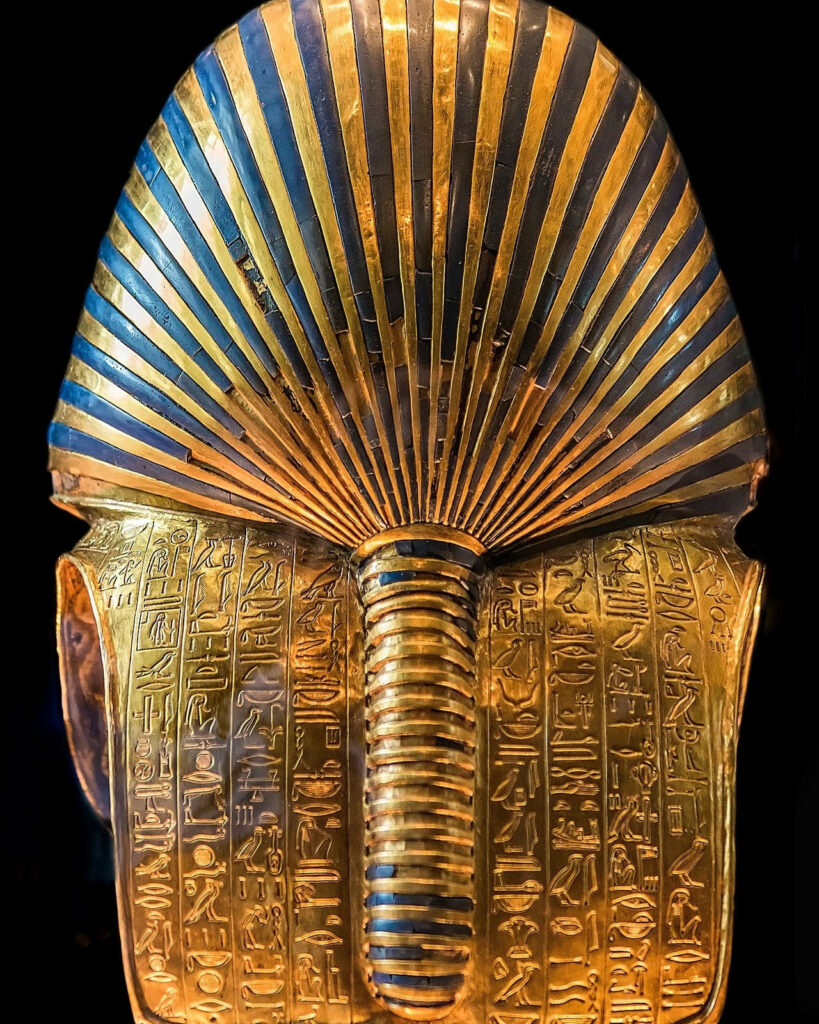A Glimpse into Pharaonic Splendor

In the history of archaeological finds, few discoveries rival the magnificence and importance of Tutankhamun’s golden mask. Discovered in 1922 by Howard Carter within tomb KV62 in the Valley of the Kings, this stunning artifact has mesmerized audiences for nearly a century, providing insights into the artistic brilliance and spiritual practices of ancient Egypt.
The Mask’s Divine Purpose

The mask, far more than a mere ornament, served a crucial role in ancient Egyptian funerary practices. Crafted to cover the face of the young pharaoh’s mummy, it was imbued with magical properties, designed to guide Tutankhamun’s soul back to his body and ensure his resurrection in the afterlife. The intricate details of the mask, from the regal uraeus adorning the brow to the inscriptions from the Book of the Dead on its reverse, speak volumes about the Egyptians’ complex beliefs surrounding death and the afterlife.
A Tale of Discovery and Controversy

The story of the mask’s discovery is as fascinating as the artifact itself. When Howard Carter first peered into Tutankhamun’s tomb in 1922, he was met with a sight that would change the course of Egyptology forever. The tomb, untouched for over 3,000 years, revealed a treasure trove of artifacts that painted a vivid picture of pharaonic wealth and craftsmanship.

However, recent analyses have sparked intriguing debates about the mask’s true origins. Some experts, including Egyptologist Nicholas Reeves, suggest that parts of the mask may have originally belonged to another royal figure, possibly even the famous Queen Nefertiti ruling as King Neferneferuaten. This theory adds a layer of mystery to an already captivating artifact.
The Mask’s Enduring Legacy
A Symbol of Ancient Egyptian Artistry

Weighing 22.5 pounds and crafted from sheets of gold inlaid with semi-precious stones and colored glass, the mask stands as a testament to the unparalleled skill of ancient Egyptian artisans. Its exquisite craftsmanship continues to inspire awe and admiration, offering insights into the technological capabilities of a civilization that flourished over three millennia ago.
From Cairo to the World

Since its discovery, the mask has become an ambassador of ancient Egyptian culture, drawing millions of visitors to exhibitions worldwide. A particularly notable showcase occurred in 1972 at the British Museum, marking the 50th anniversary of the tomb’s discovery and attracting 1.6 million visitors.
Preserving the Past for the Future
Today, the mask resides in the Egyptian Museum in Cairo, soon to be transferred to the new Grand Egyptian Museum. As it continues to be studied and admired, Tutankhamun’s golden mask remains a powerful symbol of Egypt’s rich cultural heritage, bridging the gap between the ancient world and our modern era.

The story of Tutankhamun’s mask is more than just a tale of archaeological discovery; it’s a narrative that intertwines history, art, religion, and mystery. As we continue to unravel its secrets, the mask stands as a golden testament to the enduring fascination of ancient Egypt, inviting each new generation to peer into the eyes of a young pharaoh and wonder at the civilizations that came before us.

